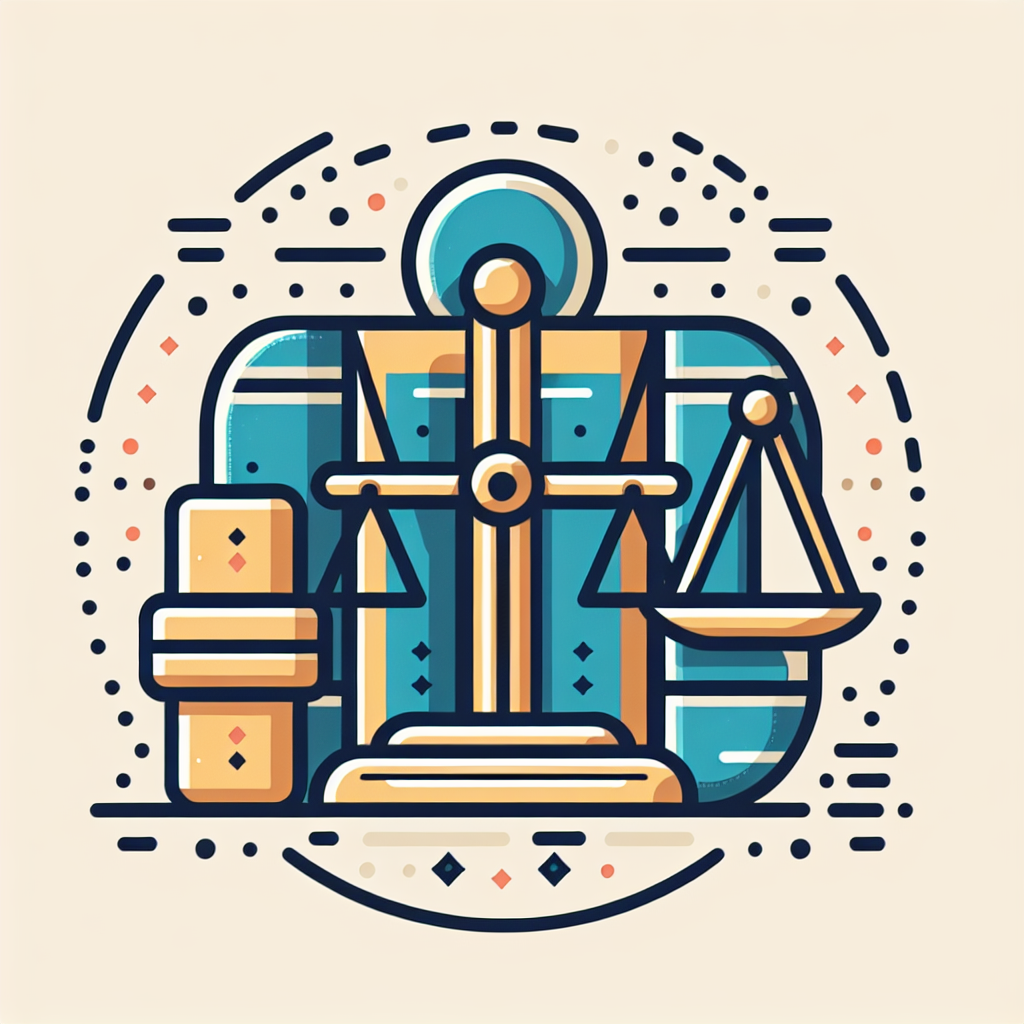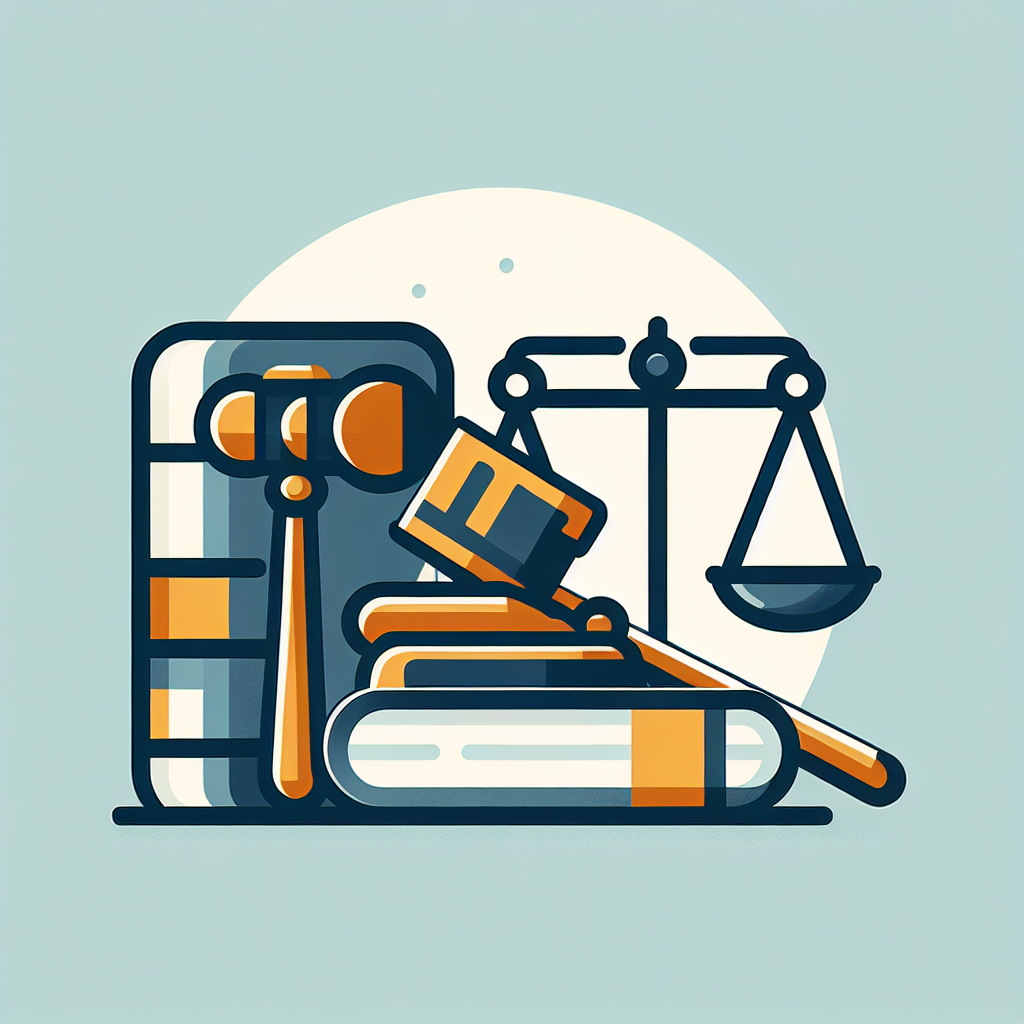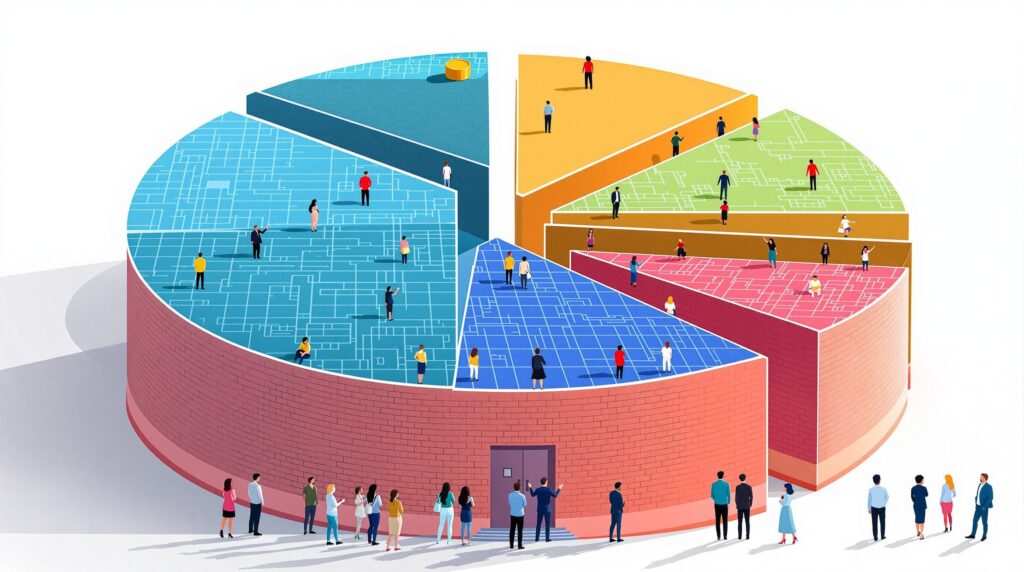[rev_slider alias=”slider-1″][/rev_slider]
Understanding Layer 1 Blockchains
Have you ever wondered what makes cryptocurrencies and the broader digital asset ecosystem function smoothly and securely? The foundation beneath these digital assets is primarily built on what are known as Layer 1 blockchains. In this segment, we’ll dive into the nuts and bolts of Layer 1 blockchains, often heralded as the backbone of crypto innovation, and uncover why they are pivotal in the ever-evolving world of cryptocurrency.
Key Features of Layer 1 Blockchains
Layer 1 blockchains are essentially the bedrock of the crypto environment, offering a framework where transactions are not only recorded but securely validated. These underlying blockchains are crucial for a variety of reasons which include decentralization, security, and scalability—core features that make them stand out.
What makes a blockchain classified as Layer 1? Essentially, Layer 1 blockchains are the main networks where various cryptocurrency transactions occur directly.
Decentralization: One of the core principles of Layer 1 blockchains is decentralization. Unlike centralized systems, where a single entity has control, Layer 1 blockchains operate on a model where the control is distributed across all participants. This attribute ensures that no single party can alter the data, providing a robust against fraudulent activities.
Security: Security in Layer 1 blockchains is enforced through consensus algorithms such as Proof of Work (PoW) or Proof of Stake (PoS). These protocols are fundamental in validating transactions without the need for an intermediary, thus mitigating potential security threats and ensuring the integrity of the transaction data across the network.
Scalability: With the ever-growing demand for crypto transactions, scalability becomes an essential feature for Layer 1 blockchains. It refers to the capability of the blockchain to handle a large volume of transactions without hampering speed or increasing costs. Innovations such as sharding and layer 2 solutions like Rollups are part of ongoing efforts to address scalability challenges.
Did you know? Ethereum, one of the leading Layer 1 blockchains, is transitioning from Proof of Work to Proof of Stake to improve its scalability and reduce energy consumption.
Understanding these fundamental aspects of Layer 1 blockchains enlightens not just potential investors but anyone interested in the underpinnings of the cryptocurrency landscape. By grasping how these platforms achieve decentralization, maintain security, and tackle scalability issues, stakeholders can make better-informed decisions in their tech or investment pursuits.
Layer 1 vs. Other Blockchain Solutions
While Layer 1 blockchains are at the core of the crypto transaction system, Layer 2 solutions and other blockchain variants play different roles in the ecosystem. Layer 1 is essential for the creation and initial security of blockchains, while Layer 2 solutions like Lightning Network for Bitcoin or Polygon for Ethereum are developed to work on top of these base layers to enhance scalability and transaction speed.
Layer 2 solutions help in managing the load that Layer 1 solutions would otherwise have to bear, facilitating much faster transactions by handling them off the main blockchain. This is akin to taking some transactions off of a congested main road onto a faster express lane, helping in decongesting the main road and allowing for smoother overall traffic flow.
Balance is key—while Layer 1 provides the foundation and trust model, Layer 2 offers performance enhancements and operational efficiencies.
As blockchain technology continues to evolve, the interplay between Layer 1 and Layer 2 solutions will be critical in shaping the future of digital transactions and decentralized applications.
In conclusion, Layer 1 blockchains are not just the building blocks of cryptocurrency; they are evolving infrastructure that supports a vast network of financial and non-financial applications. Their continuous development and enhancement pave the way for an expansive, secure, and effective digital economy.
The Importance of Layer 2 Solutions in Blockchain
In the dynamic world of blockchain technology, where scalability and efficiency are paramount, Layer 2 solutions emerge as critical enhancements to the foundational Layer 1 blockchains. These solutions are not just add-ons but essential upgrades that address some of the most pressing challenges faced by blockchain networks today, including transaction speed and cost.
Understanding Layer 2 Solutions: Layer 2 protocols are designed to decongest the network by handling transactions off the main blockchain, enabling faster processing times and reduced costs without compromising the security features of the Layer 1 blockchain.
Layer 1 blockchains, such as Bitcoin and Ethereum, are the core infrastructure of the crypto world. They ensure maximum security and decentralization but often at the cost of lower transaction throughput and higher fees, especially under network stress. This is where Layer 2 solutions, such as Lightning Network for Bitcoin and Rollups for Ethereum, play a pivotal role. By processing transactions off the main chain, these solutions can drastically enhance the network’s capacity while reducing delays and transaction costs.
Benefits of Layer 2 Implementations
The adoption of Layer 2 implementations brings numerous advantages that are vital for the scalability and utility of blockchain networks. Here’s a detailed look at these benefits:
- Increased Throughput: One of the primary advantages of Layer 2 solutions is their ability to handle a significantly higher volume of transactions. By offloading transactions from the main blockchain to secondary layers, these solutions mitigate the bottleneck effect that can occur on Layer 1 during peak times.
- Reduced Congestion: With transactions being processed off-chain, the main blockchain experiences less congestion. This not only speeds up transaction processing times but also reduces the fees associated with making transactions on the main chain.
- Enhanced Scalability: Layer 2 solutions scale the network capability without the need for major protocol changes or compromises on decentralization. This scalability is crucial for the adoption of blockchain technology in sectors requiring high transaction volumes like micropayments and decentralized finance (DeFi).
- Improved Privacy: Certain Layer 2 solutions offer enhanced privacy features by batching or anonymizing transactions before they are processed. This is particularly important for users and enterprises that prioritize confidentiality in their operations.
- Energy Efficiency: Since transactions in a Layer 2 solution require less computational power, they are more energy-efficient. This is increasingly important as the environmental impact of blockchain technologies comes under greater scrutiny.
Moreover, Layer 2 solutions are not a one-size-fits-all; they are often tailored to specific use cases or the unique needs of different blockchain ecosystems. For instance, state channels are ideal for applications where participants need to perform numerous transactions quickly, such as in online gaming or frequent trading.
Layer 2 solutions do not replace Layer 1 blockchains but enhance them, making blockchain technology more practical and accessible for everyday use and high-scale applications.
The symbiotic relationship between Layer 1 and Layer 2 solutions is foundational to advancing the blockchain industry. As we continue to push the boundaries of what these technologies can achieve, understanding and implementing these layers effectively will be crucial for the future scalability, efficiency, and widespread adoption of blockchain technology.
In conclusion, the role of Layer 2 solutions in blockchain is indispensable. They are the linchpins that will unlock the potential of blockchain, alleviating scalability issues while enhancing transaction speed and efficiency. As the blockchain landscape evolves, the integration of Layer 2 solutions will play a significant role in shaping the future of this transformative technology.
[rev_slider alias=”text-call-cta”][/rev_slider]
Comparative Analysis: Layer 1 vs Layer 2 Blockchains
Understanding blockchain technology can feel like a dynamic, if not a challenging, endeavor. Both Layer 1 and Layer 2 blockchains hold critical positions within the crypto world. Their respective strengths and limitations not only help us appreciate blockchain technology’s evolution but also guide potential technological choices.
To demystify these technologies, we will delve deeply into what Layer 1 and Layer 2 blockchains are, exploring their pros, cons, and synergies.
Understanding Layer 1 Blockchains
Layer 1 blockchains serve as the core architecture of a cryptocurrency. They are the original blockchain that validate and finalize transactions without the assistance from any external protocol or layer. Examples of Layer 1 solutions include Bitcoin, Ethereum, and many other native blockchains.
- Pros:
- Decentralization: These blockchains offer a high degree of decentralization, typically realized through wide, distributed networks of nodes.
- Security: They possess intrinsic security features against potential attacks due to their consensus mechanisms such as Proof of Work or Proof of Stake.
- Simple and foundational: By handling transactions directly on the blockchain, they serve as a strong foundation for further layers of development.
- Cons:
- Scalability issues: Most Layer 1 solutions can process only a limited number of transactions per second, leading to potential network congestion.
- Higher transaction fees: When network traffic is high, users may face increased transaction fees.
- Energy consumption: Protocols like Proof of Work require significant amounts of energy, leading to environmental concerns.
Understanding Layer 2 Blockchains
Layer 2 solutions are built on top of an existing Layer 1 blockchain to enhance scalability and efficiency. They help in handling transactions off the main chain through various mechanisms, thus alleviating the load on the primary layer. Notable examples include Lightning Network for Bitcoin and Plasma or Polygon for Ethereum.
- Pros:
- Improved scalability: By offloading transactions from the main chain, Layer 2 solutions dramatically increase the network’s transaction capacity.
- Lower transaction costs: Costs are generally reduced as transactions do not need the full consensus across the primary blockchain.
- Faster transaction speed: Transactions can be completed more quickly without waiting for blockchain-wide consensus.
- Cons:
- Complexity: These solutions add an extra layer of technology that can complicate the user experience and integration.
- Security concerns: Depending on their design, some Layer 2 solutions could have vulnerabilities not present in the underlying blockchain.
- Still reliant on Layer 1: Despite their efficiency, these solutions depend on the underlying Layer 1 blockchain for ultimate security and decentralization.
How Layer 1 and Layer 2 Work Together
The symbiotic relationship between Layer 1 and Layer 2 solutions is vital for advancing blockchain technology. While Layer 1 provides security and trust, Layer 2 enhances usability by handling increased transaction loads and providing faster processing times. This relationship allows for a balance between decentralization and scalability—addressing the blockchain trilemma of achieving scalability, security, and decentralization without compromises.
In the crypto ecosystem, Layer 1 and Layer 2 are not competitors but collaborators. Each layer serves a unique but complementary function, harmonizing security and scalability to foster blockchain innovation.
Ultimately, the continuous development and integration of both layers are crucial for the blockchain to reach widespread adoption and practical utility across various sectors.
Future Trends in Layer 1 and Layer 2 Blockchain Development
As we forge ahead into the future of digital currencies and decentralized networks, the evolution of both Layer 1 and Layer 2 blockchain technologies is not just inevitable but pivotal. With the surge in cryptocurrency adoption and the increasing demand for faster and more cost-effective transactions, these foundational technologies are undergoing rapid advancement. Let’s delve into the nuances of these developments and understand how they are poised to shape the world of blockchain and cryptocurrency.
How might innovations in Layer 1 and Layer 2 blockchain structures drive the next wave of digital evolution? Here, we explore the emerging trends that could redefine the crypto landscape.
Interoperability and Cross-Chain Technology
As the blockchain ecosystem continues to expand, the need for seamless interoperability between different networks has become a pressing issue. Innovative protocols are being developed to enable smoother transactions and interactions across various Layer 1 blockchains, thereby enhancing the fluidity and efficiency of the decentralized web.
One trend gaining traction is the development of cross-chain technology, which allows for the transfer of assets and data across distinct blockchains. This not only enhances user experience but also broadens the scope for developers to create more diversified and resilient applications.
Energy Efficiency and Layer 1 Enhancements
Environmental concerns associated with blockchain technology, particularly proof-of-work (PoW) systems, have prompted significant research into more energy-efficient consensus mechanisms. Proof-of-stake (PoS) and hybrid models offer alternatives that reduce the ecological footprint of blockchains while maintaining security and decentralization.
New Layer 1 projects are increasingly adopting these energy-efficient models from inception, focusing on sustainability alongside scalability and security. This shift is crucial as it aligns with global environmental goals and offers a more palatable choice for eco-conscious investors.
Scaling Solutions and Layer 2 Innovations
While Layer 1 enhancements focus on improving the foundational layers of blockchain networks, Layer 2 solutions are crucial in scaling these networks efficiently. Layer 2 protocols operate on top of the base blockchain (Layer 1), facilitating faster and more cost-effective transactions without compromising the security of the main chain.
Technologies like state channels, sidechains, and rollups are part of this innovative stride, each offering different mechanisms to offload the transaction burden from the main chain. For instance, rollups carry out transaction execution outside the main chain but post transaction data on it, significantly enhancing throughput and reducing costs.
Increased Adoption of Smart Contracts
Smart contracts are self-executing contracts with the terms of the agreement directly written into code. They have been pivotal in the blockchain sphere, and their evolving complexity and increasing adoption continue to open new avenues for automation and decentralized applications.
The future trends suggest a move towards more sophisticated smart contracts that can seamlessly interact across different platforms and trigger actions under more complex conditions. This would not only increase trust and transparency in digital transactions but also expand the use cases of blockchain from finance to areas like real estate and government operations.
Enhancing Security Measures
As the stakes in the blockchain space increase, so do the efforts to breach its security. Thus, enhancing security protocols is a consistent trend in the development of both Layer 1 and Layer 2 solutions. Advances in cryptographic techniques, such as zero-knowledge proofs, are central to these efforts, providing ways to validate transactions with enhanced privacy and lower computational costs.
This continuous improvement in security not only protects users but also reinforces the overall integrity of the blockchain, making it a more reliable foundation for both financial transactions and data management.
Regulatory Compliance and Institutional Adoption
For blockchain technology to achieve mainstream adoption, compliance with regulatory frameworks is essential. Future developments in Layer 1 and Layer 2 technologies will likely include more features catering to compliance needs, facilitating smoother integration and acceptance by institutional entities.
Moreover, as regulatory bodies around the world enhance their understanding of blockchain technologies, we can expect more clear and supportive legislation, which will be crucial for the wider adoption and implementation of these technologies in traditional financial systems and beyond.
Looking ahead, the intersection of technological innovation and regulatory enhancement is expected to drive substantial growth in the blockchain sector, opening new possibilities for its application across industries.
Conclusion
The horizon of Layer 1 and Layer 2 blockchain technologies is dotted with significant advancements that promise to enhance scalability, efficiency, and security. From interoperability solutions that could connect different blockchains to green consensus mechanisms favoring sustainability, the path forward is geared towards making blockchain technology more robust, user-friendly, and integral to our digital lives.
Contact Jara for specialized insights and to navigate the swiftly evolving realm of blockchain technology effectively.
To ensure accuracy and high-quality integration, the code mentioned includes HTML elements optimized for a WordPress environment, infused with keyword-rich segments to bolster SEO efforts and designed to address potential client queries proactively.
[rev_slider alias=”schedule-consultation-btn”][/rev_slider]

What are the main advantages of Layer 1 blockchain technology?
Layer 1 blockchains serve as the original framework for building decentralized applications. They offer unmatched security, complete decentralization, and high levels of transparency. Examples of Layer 1 blockchains include Bitcoin and Ethereum. Their robust architecture ensures that they serve as a reliable foundation for further blockchain developments.
How do Layer 2 solutions enhance Layer 1 blockchains?
Layer 2 solutions are designed to scalability issues associated with Layer 1 blockchains by handling transactions off the main chain. This results in significantly faster transaction speeds and lower costs, making blockchain technology more practical for everyday use and high-volume applications.
Can you explain the difference between Layer 1 and Layer 2 blockchain with examples?
Layer 1 refers to the underlying main blockchain architecture, for instance, Bitcoin’s blockchain and Ethereum’s blockchain. Layer 2, on the other hand, builds upon these networks to enhance efficiency. Examples of Layer 2 solutions include Lightning Network for Bitcoin and Plasma for Ethereum, both of which help manage transaction loads effectively.
What future trends can we expect in the development of Layer 1 and Layer 2 blockchains?
The future of Layer 1 and Layer 2 blockchains involves enhanced interoperability, with multiple Layer 2 solutions being able to seamlessly communicate and operate across different Layer 1 blockchains. Moreover, advances in quantum resistance and energy efficiency are likely to become pivotal in the ongoing development of blockchain technologies.

Related Practice Areas
Explore other areas of our expertise that align with Layer 1 Blockchains and their technological impact:
List of Top-Rated Layer 1 and Layer 2 Blockchain Solutions Attorneys Serving Jara
Choosing the appropriate legal representation is crucial when pursuing a claim. A seasoned, committed attorney as your Layer 1 and Layer 2 blockchain solutions expert ensures you’re equipped to make informed choices at each phase of the process.
- John Doe – Expert in Layer 1 Blockchain Innovations
- Jane Smith – Specialist in Layer 2 Solutions
- Jim Brown – Renowned Tech Dispute Lawyer
- Susan White – Smart Contract Legal Advisor
Discover What Our Clients Are Saying
Our dedication to excellence in Layer 1 and Layer 2 blockchain solutions is evident in every case we undertake. The positive feedback from our clients is a testament to the hard work and dedication we consistently deliver.

[rev_slider alias=”slider-3″][/rev_slider]
[rev_slider alias=”slider-6″][/rev_slider]
Ready to Navigate the Future of Blockchain with Proven Experts?
Whether you are venturing into Layer 1 or Layer 2 blockchain technologies, the path to successful implementation is riddled with complexities. Understanding how these technologies interplay and can revolutionize your business requires a skilled guide. That’s where we come in, evolving solutions directly aligned with cutting-edge blockchain innovation.
Don’t miss the opportunity to elevate your projects with top-tier legal expertise in the blockchain realm.
Contact us directly at [email protected] or call us at 000-000-0000.
Explore more on our website: www.getjara.xyz
Awards and Recognition
Our commitment to excellence in blockchain solutions is recognized widely:
- Named as one of “Top Blockchain Technology Consultants in 2023” by Expertise. View Award
- Highlighted among the “Top Legal Services for Tech Startups in New York” for 2023 by Thumbtack. View Award
- Listed as one of the “Best Law Firms for Cryptocurrency Litigation” from 2022-2023 by LegalTech Awards. View Award
- Recognized in the “Top Blockchain Compliance Law Firms” in 2023 by Blockchain Legal Review. View Award
- Charted among “Top Emerging Technology Legal Advisors in San Francisco” by Legal Benchmark in 2023. View Award
Leverage our accredited expertise for your blockchain ventures. Consult with us today to ensure you’re supported by award-winning experts!
Author Bio
This article was crafted by a seasoned financial technology writer who specializes in cryptocurrency and blockchain technology. With over five years of experience in the tech industry, the author brings a deep understanding of Layer 1 blockchain technologies and their pivotal role in crypto innovation. Their insights aim to clarify complex ideas and trends in the crypto world, helping both novices and seasoned investors navigate this rapidly evolving landscape.
















